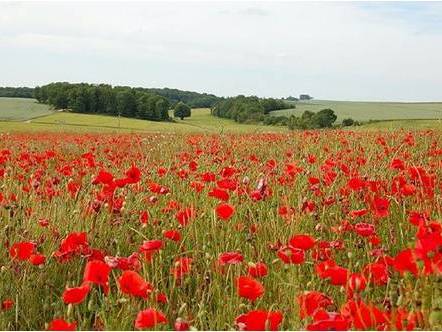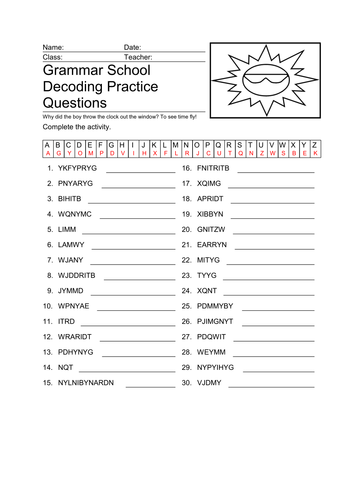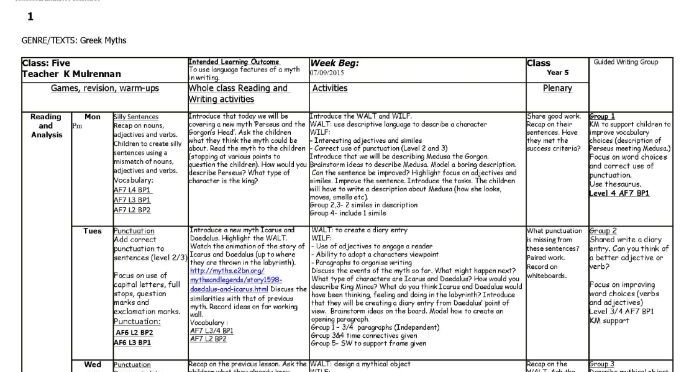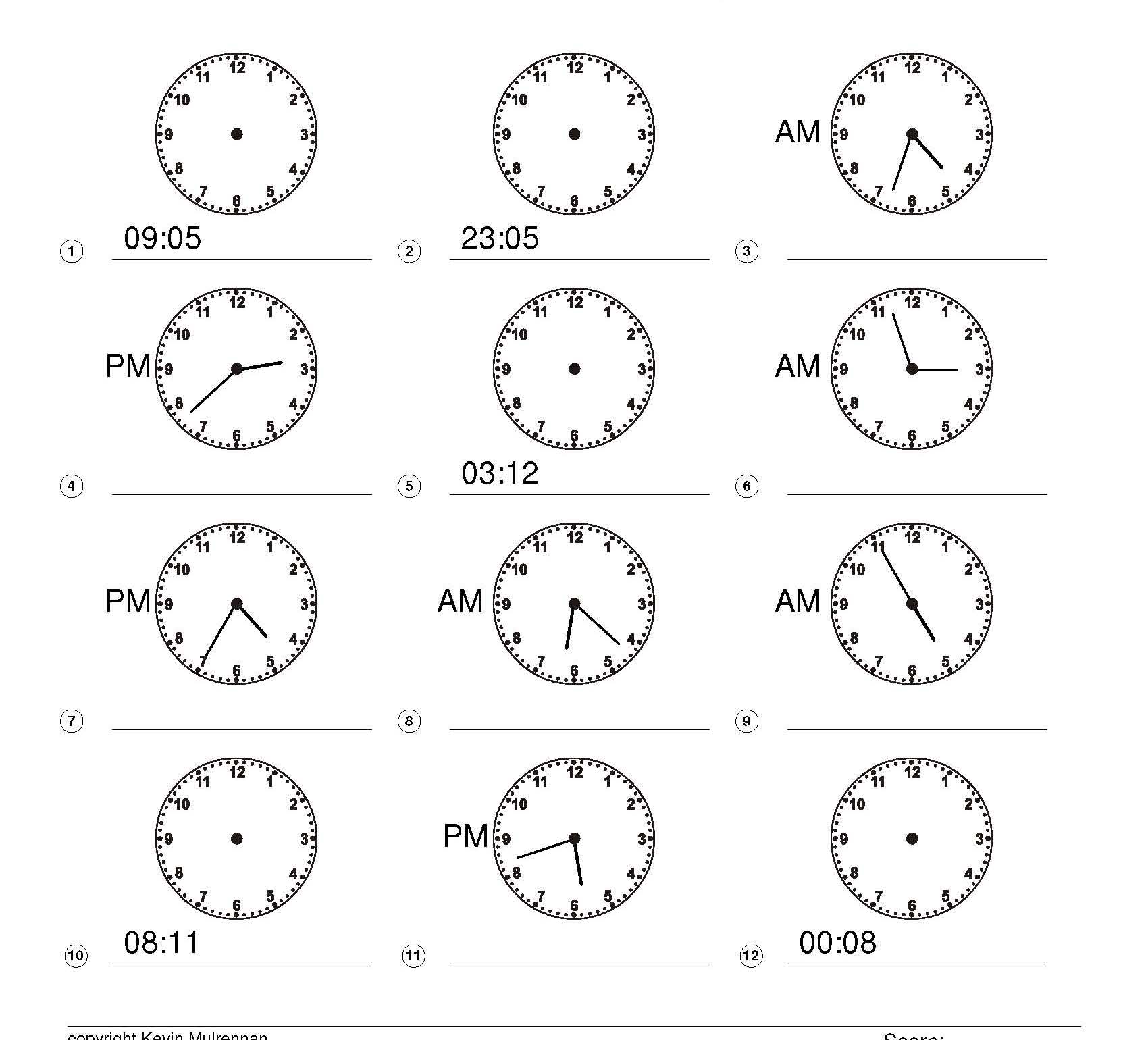410Uploads
143k+Views
47k+Downloads

Literacy Year 5 or 6 Stories from Other Countries 3 Weeks Planning Ahmed's Secret Heide
Great planning for year 5.
Plenty to keep you going for three solid weeks.
Powerpoints, planning, worksheets etc etc
The zip has the lot. I have put up some on the ordinary download so you can look.
Sample planning :
Genre: Narrative Unit 3 â âStories from other culturesâ
Focus Texts: âAbelaâ by Berlie Doherty (class reader), âThe day of Ahmedâs secretâ by Florence Parry Heide, âStories from around the worldâ Usborne books.
Objectives
Primary Framework Phase 1
⢠Create roles showing how behaviour can be interpreted from different viewpoints
⢠Know and apply common spelling rules
⢠Infer writersâ perspectives from what is written and from what is implied
⢠Compare different types of narrative and information texts and identify how they are structured
⢠Experiment with different narrative form and styles to write their own stories
Adapt sentence construction to different text-types, purposes and readers
Punctuate sentences accurately, including using speech marks and apostrophes.
Learning/Writing outcome for unit: Write a story from a different characterâs point of view. Reflect on writing critically and edit it against success criteria.
LO: Whole Class Shared Learning
Guided and Independent Activities: Plenary:
M Understand and use the word âcultureâ.
Begin to recognise the features of a story from another culture. Show the words ânarrativeâ and âfictionâ. Children to TTYP and talk about what they mean. Come back together and elicit that they are words for âstoryâ. We are going to be studying a narrative unit for two weeks. Briefly recap the five structural features of a story. What types of stories have we studied so far? (Myths, legends and stories by a significant author).
Show the word âcultureâ. Children to TTYP and discuss.
Come back together and explain that a culture refers to âthe attitudes and behaviour that are characteristic of a particular social group.â Emphasise that we are not necessarily talking about different religions or even other countries â there are a lot of different cultures even within one country.
Lead to class discussion.
Provide children with copies of âThe Day of Ahmedâs Secretâ â explain that this story is from Africa. Ahmed lives in a city called Cairo â the capital of Egypt. Show on a map. Have we heard anything about Cairo in the news recently?
Read half of the story and then challenge children to discuss on their tables:
The features of the story.
Their predictions about Ahmedâs secret.
Come back together, read the rest of the story and discuss.
How is Ahmedâs life different from your lives? In his culture it is perfectly normal for children to be working very hard and taking over the family business from his Father. What does his pride at being able to write his own name suggest about his level of education? About his place in society?
Create a working wall list of features to include:
Capital letters used at the start of each sentence and full stops at the end.

Great Year 5 English Literacy Christmas Planning Alternative Christmas
This is some great planning for Christmas for Year 5 Literacy.
I found the kids loved it.
Advantages for you: kids are interested, itâs non religious so can be shown to everyone, you can watch the lovely short movie umpteen times so takes the strain off you.
Itâs based on a great little movie, voiced by the late great John Hurt.
It will fill up the last two to three weeks nicely.
Plus thereâs non literacy planning for free.
Some example planning :
To analyse and create a character and setting description for 23 Degrees 5 Minutes North.
I can express verbally what a character may be feeling, thinking or doing
I can explain why I think a character may feel, think or do something
I can describe a setting using figurative language
Starter 5 mins
Pen portrait of key characters in 23 Degrees 5 Minutes North: Children mind map/annotate information about the key characters that they know so far around an image of The Adventurer and Professor Erit. They add information about the internal feelings, thoughts and emotions within and the external information such as physical description, or known facts
Activity 1 5-10 mins
Use key questions and discussion in groups to think about answers to questions such as: Why am I here? Will I be able to find Professor Erit? Emphasise the importance of chn giving evidence to support their opinion when they give a response to these questions.
Activity 10 mins
Return to image of the Adventurer and Professor Erit. Using a different coloured pencil, chn should add information about these characters
Main 20 mins
Give chn an image of the setting and ask them to mind-map descriptive words, phrases or sentences they could use to describe the narrative setting.
Model using the different kinds of sentence-types to record a setting description, using the vocabulary recorder in the mind-map. Chn use sentences to build suspense if they can.
Plenary 5 â 10 mins
Chn share their comments about the Adventurer and Professor Erit with the class.
Chn to explain what they have now learnt about each character - using their skills of inference. Share best sentences to describe setting.
Take a moment to add any extra information after the class discussion to their own work, using another coloured pencil.

The Highwayman Alfred Noyes Teaching Resources Powerpoints Worksheets
Assorted great planning and ideas for the superb poem The Highwayman by Alfred Noyes.
Great powerpoints.
Great ideas and worksheets.
Plenty to get your teeth into and reassemble.
Sample planning :
Introduce children to âThe Highwaymanâ. Explain that it is a poem that tells a story involving a highwayman.
They will need to listen carefully as the poem is read, as it uses a lot of âold-fashionedâ language. The poem was written by Alfred Noyes and was first published in August 1906.
Read the poem to the class and then children talk with partner about what they have found out about the story.
Come back together and discuss the story told through the poem. How can children tell that this poem was written some time ago?
Make notes on the board about character and story.
Make notes about the Highwaymanâs appearance.
Recap on the techniques we use in fiction writing (and make clear again that poetry is a type of narrative) to describe the scene/setting to the reader. What is our main objective? To create an image in the readerâs mind. We do this by using the senses â recap.
Re-read just the first three lines of the poem, ask children to close eyes and visualise the setting as I read it again. Talk about the language and the kind of pictures it created for them.
The wind was a torrent of darkness upon the gusty trees,
The moon was a ghostly galleon tossed upon cloudy seas,
The road was a ribbon of moonlight looping the purple moor,
Can the children see a technique which has been used in each of the three lines? Metaphor. Discuss.
Children to pick out words which evoke the senses:
Darkness, gusty trees, ghostly etc
Recap what we have found out so far about âThe Highwaymanâ. What makes it a narrative poem?
Explain childrenâs final writing outcome. They are going to use the opening part of âThe Highwaymanâ as their inspiration and they are going to write their own poem based on Bess, the Landlordâs daughter.
Recap on last lesson â what is a simile and what is a metaphor?
What are the three nouns which Noyes describes using metaphor? The wind, the moon and the road. Children are also going to use metaphor to describe these, they are then going to use simile to describe Bess waiting for her love.
Explain that todayâs planning session is going to focus on the metaphor part of the writing outcome.
Model how to write a metaphor by first mind mapping each item.

11+ Grammar School Synonym Questions Literacy 100 Worksheets with Answers
Synonyms are an important part of the 11+ grammar school exams. I have designed 100 worksheets on this area. I have chosen a group of over 600 words. There are 10 questions per sheets and pupils write a, b, c or d. The teacher will be able to have a lively discussion when going over the work with the pupils, discussing the meaning of all the words. Of course they can be used by not only grammar school pupils. They would suit anyone of the top end of primary, adults with learning difficulties or foreign students learning English.

500 Latin Wordsearches Word Searches Cambridge Latin Course
500 word searches on the first book of the Cambridge Latin course.
Answers provided.
The block of text has different shapes. Thereâs even some colour ones if you are feeling extravagant and can afford the ink!
Great for rainy Friday afternoons.

KS2 Mathematical Puzzles Across Down Subtraction
100 puzzles plus answers.
Fill in the gaps in the grids. Mainly 2 figure numbers but some 1 figure ones.
Great for homeworks or time filling.
Bundle

Bundle Coins Worksheets UK Euro Shopping
A good value bundle.
Fill in the worksheets on counting Euro coins, UK coins and a series of shopping questions that test knowledge of money etc.

Year 3 Planning Spring Literacy Numeracy Ref A
Important! If youâd like to buy the whole yearâs planning (Autumn, Spring and Summer) youâd be better off buying my bundle.
This is planning for year 3 for a Spring term.
Plenty of great material here that you can adapt and cut and paste into your own schoolâs model.
After decades of teaching Iâm retired from teaching now. Iâd like to help the younger generation so Iâm putting my plans online. I hope your Sundays will be made a little easier by cutting and pasting allowing you more free time.
You get:
Literacy planning e.g. Myths and Legends, Poetry (language play) 9 weeks worth
Numeracy planning 11 weeks worth
Creative curriculum (a bit)
RE (a bit - I taught mainly in Catholic schools so feel free to ditch this if you please)
Science (a bit)
Nocturnal Animals (a bit)
You get 75 mb of material, which is good value in my opinion.
Remember, all schools are different so you will have to adapt my materials to suit your school. Itâs not a silver bullet, but should save you lots of time as you can cut and paste.
Great for N.Q.T.'s and experienced alike.

VE Day Remembrance Day World war 1 History Teaching Materials Plans Resources KS2 History
Iâm now retired from teaching after decades in the classroom.
Iâd like to help the younger generation.
One aspect I donât miss is Sundays. Trying to fill in planning grids that were rarely used or looked at. What a nightmare!
So Iâve put together my teaching plans, powerpoints, adobe pdf files etc from the various schools I was in.
Feel free to adapt for your planning grid.
In it are lesson plans, powerpoints, questions etc.
You get:
9 pdf files 19 powerpoints 16 word files
example text in pp
Remembrance Day 2010
LO: Understand why and what we remember.
Recognise how important Year 5âs job is.
Examine some sources of information about the first and second world wars.
Each year the nation expresses its unequivocal support for The Royal British Legionâs charity work through the Poppy Appeal.
The emphasis this year is the need to help the Afghan generation of the Armed Forces and their families - today and for the rest of their lives.
What is the Poppy Appeal?
What is Remembrance Sunday?
The Sunday nearest to November 11 when those who died in World War I and World War II are commemorated.
In 1900 (how many years ago?) there were
five great, powerful nations in Europe:
Britain France RussiaAustria-Hungary Germany
These countries had empires and armies.
Between 1900 and 1914 tension and arguments began to cause trouble.
The five main countries began an âarms raceâ, they were trying to amass troops, weapons and war ships.
Remember that powerful country called Austria-Hungary? The heir to the Austrian Hungarian throne was a man called Archduke Franz Ferdinand.
Archduke Franz Ferdinand was assassinated â this caused lots of trouble between the five rival nations.
Britain declared war on 4th August
1914.
Article on the assassination of the Archduke.
The total number of casualties, both military and civilian, were about 37 million. 16 million deaths. 21 million wounded. About 1.1million British troops died.
Major hostilities of World War I were formally ended at the 11th hour of the 11th day of the 11th month of 1918.
Lest we forgetâŚ

SPAG Ideas Powerpoint 18 slides Good for Inset or General Teaching
A powerpoint that gives ideas on how to do short spag exercises in lessons
Could be used as part of an inset day.

Matilda Roald Dahl Day Literacy Year 6 Planning Powerpoint Setting Descriptions
My planning for teaching Matilda in Year 6.
Nice planning and powerpoint.
Great to adapt for your personal planning.
sample planning :

Back To School Planning Year 4 Year 5 First Week Rules Activities Powerpoints
back to school activity pack.
Ideal for year 4 and 5. Can be adapted for different years of course.
I mainly taught in these years groups, and this planning helped so much in that tricky first week,
There;s a bit of everything. Planning of course, rules, display, activities
Just packed with vital little time savers.
Some really goo VCOP stuff too.
Plenty of resources. Give it a go!

Number Order 100 Worksheets with Answers Maths Mathematics KS1
100 worksheets with answers on Number Order.
Pupils have to put the numbers in the correct order.
There are at least 10 sets of numbers per sheet.
A nice little time filler.

Simplifying Fractions 100 Worksheets with Answers Maths Mathematics KS2
100 worksheets on simplifying fractions.
Answer sheets provided.
A good time filler or homework.

11+ Verbal Reasoning Decoding Vol 2 Maths KS2
This is volume 2.
I have designed 100 worksheets on decoding numbers for the 11+ non verbal reasoning questions. There are 100 worksheets provided on a cd. Decoding is an important aspect of the 11+ exams. Ideal for parents, pupils and tutors. Answer sheets provided. The Decoding worksheet helps to reinforce spelling and problem solving skills for students. The letters of each word are replaced with other letters or numbers based on a pattern. Students must translate the words and spell them correctly. You can see an answer sheet in my picture with the answers in red.

Year 5 Literacy Planning Autumn Term KS2 Greek Myths Big Write
This is a zip file containing Literacy planning for a year 5 class (Autumn term)
It consists of 14 short term plans I designed. There is one Literacy lesson per day.
You will get 14 Microsoft Word documents. They are based on the Greek myths.
Iâve also included for free some extra teaching materials that you can use. Iâve included too 3 medium term plans , one for each term). These cover plans and ideas not just for Literacy, but other subjects as well.
Iâve also included an extra week from the next term. Feel free to use it to plug any gaps.
This will help you do your own planning. Feel free to cut and paste into your own schoolâs plans.
Ideal for someone who had to do a termâs supply like I had to do.
Please bear in mind:
every school is different. My plans assume you have the aide of a TA, but this is not essential. There is no differentiation in the planning. Everyone does the same thing to the best of their ability.
you may want to add your own detail. These are short term plans remember.
I have used walts and wilts. Your school may do something different.
A very few number of weeks have a small gaps for things like tests and inset days. Use the extra week one planning for the next term (included for free) if you wish.
Bundle

Year 3 Planning 3 Terms Worth Plus Telling the Time Worksheets Times Tables Bundle
Great Bundle.
3 terms plans plus great worksheets (with answers) om Times Tables and Telling the Time.
This is planning for year 3 for 3 terms .
Plenty of great material here that you can adapt and cut and paste into your own schoolâs model.
After decades of teaching Iâm retired from teaching now. Iâd like to help the younger generation so Iâm putting my plans online. I hope your Sundays will be made a little easier by cutting and pasting allowing you more free time.
You get for example for one term
Literacy planning e.g. Myths and Legends, Poetry (language play) 9 weeks worth
Numeracy planning 11 weeks worth
Creative curriculum (a bit)
RE (a bit - I taught mainly in Catholic schools so feel free to ditch this if you please)
Science (a bit)
Nocturnal Animals (a bit)
Please read the three terms for full details.
Remember, all schools are different so you will have to adapt my materials to suit your school. Itâs not a silver bullet, but should save you lots of time as you can cut and paste.
Great for N.Q.T.'s and experienced alike.

Roman Numerals 100 Worksheets with Answers Maths Classical Civilisation
Iâve designed 100 sheets where pupils have to put the Arabic numeral to the Roman one.
All answers provided.
At least 20 questions per sheet. Later ones have 100. Lots of differentiation so the sheets start easy and get hard.

Photosynthesis Unit Science Biology Powerpoints Planning worksheets
Thus unit deals with Photosynthesis for year 6.
Plus other Science topics.
8 nice powerpoints plus planning plus worksheets.
Example planning :
To understand that green plants need light in order to grow well
To know that green plants make their own food using light in a process called âphotosynthesisâ
Sc1
To make careful observations of plant growth and explain these.
To make simple oral predictions PUT CHILDREN IN GROUPS
Begin lesson by showing ch. 2 plants; a green plant that has been kept in the dark for several weeks and a healthy plant. Give ch. time with talk partners to discuss the differences they observe and why these might be. Also ensure ch. can name all the parts and functions of the plant.
Lead these observations into a discussion about what plants need to be healthy. Take suggestions and write on board. Ensure ch. understand that plants need light, water, air, warmth and minerals.
Explain to ch. that plants need light the most of all the above to be able to grow well but seeds donât need light to germinate. Why? Lead ch. into discussion about plants needing light to feed themselves and if they donât get light they wonât grow just like if we donât eat properly we wonât grow.
Ask ch. to talk to talk partners about how plants feed themselves. Introduce term on board âPHOTOSYNTHESISâ Explain that âPHOTOâ means light and âSYNTHESISâ means making something. Explain how photosynthesis works and demonstrate through ppt. (See below) Ensure ch. understand the leaves are vital for photosynthesis and then pass around some leaves so ch. can observe the detail.
Ask the ch. to make oral predictions about what would happen to the un-healthy plant at the beginning if it was left on the widow-sill for a few weeks. Ask the ch. what would happen to the healthy plants leaves if they were covered.
Plenary
Explain to ch. that we are now going to leave the un-healthy plant on window-sill and observe what happens over a period of the week. Take a photograph of it and allocate somebody the job of taking a photograph of it every day. At the end of the week, show photos on board as a slide show and ch. can write an explanation of what has happened. Discuss however that the plant will also need water, warmth and minerals. (Use a geranium plant as these perk up quickest when exposed to more light)
Ask ch. to discuss what minerals are. Explain that next lesson we will be discussing the need for good minerals to aid growth.

Christmas 2 Powerpoints Plus the Feast of the Epiphany
Two great powerpoints and some planning.
Nice powerpoint on Epiphany.
Sample :
Share the new targets with the children and explain that this is a short unit â two double lessons.
Read the story of Jesusâ birth from Matthewâs Gospel â Mt 1: 18-2: 23. Who are the main characters in this story? Concentrate on Mary, Joseph and King Herod.
Talk through the story. God had promised a saviour to free us all from our sins and he sent His only son into the world for us.
Talk about the priorities for any family when a baby is expected. (safety and comfort of the mother) .
Activity One
Come back together and watch scene featuring King Herod. Fear gripped King Herod, his mighty power was threatened. He gathered all the chief priests and scribes to see what they knew â they confirmed that Bethlehem had been foretold by the prophets. Herod launched his plan to locate the baby so that he could destroy him. What was Herodâs mistake? (look for the children to understand that Herod thought that Jesus would be an earthly King with a throne and a crown who was overthrow Herod).
What were Mary and Josephâs feelings about the birth of the baby? Do you think they were scared? Happy? Relieved?
Children to TTYP and discuss â What does the birth of Jesus mean for us?
Jesus truly God and truly human has come down to Earth.
He brings peace, love and true freedom to those who seek him.
He opens the way to heaven for us.
He has come to save all people.
What does the birth of Jesus teach us?
God seeks those with an open heart to receive him.
If you truly seek God, He will find you.
Itâs not money, wealth or knowledge that matters because God seeks the lowly and the humble who are looking for Him.






















